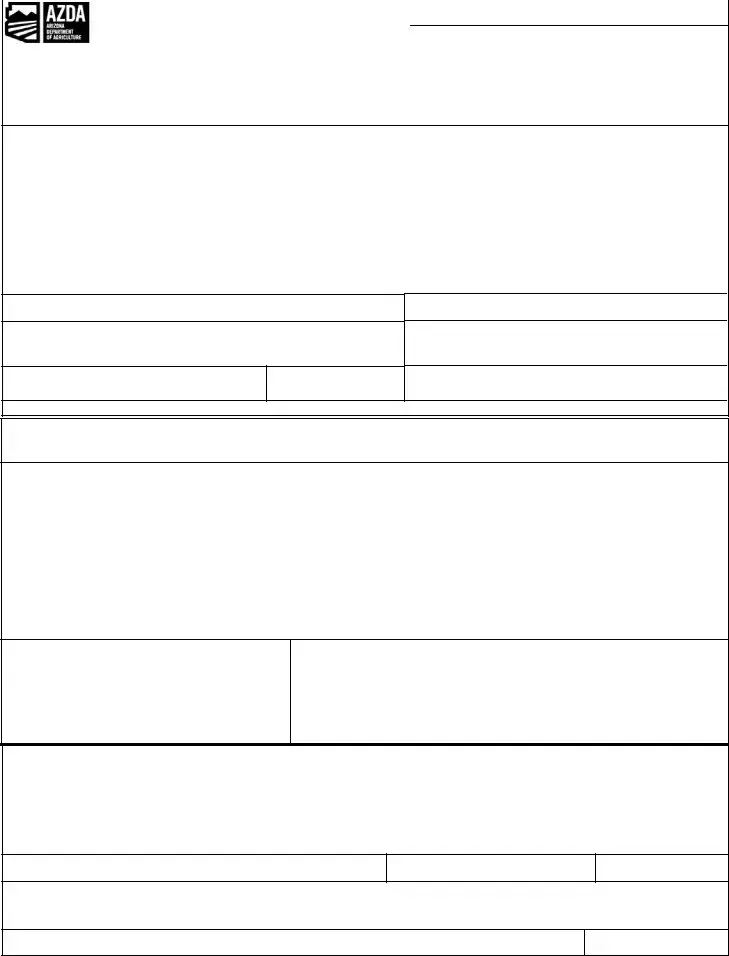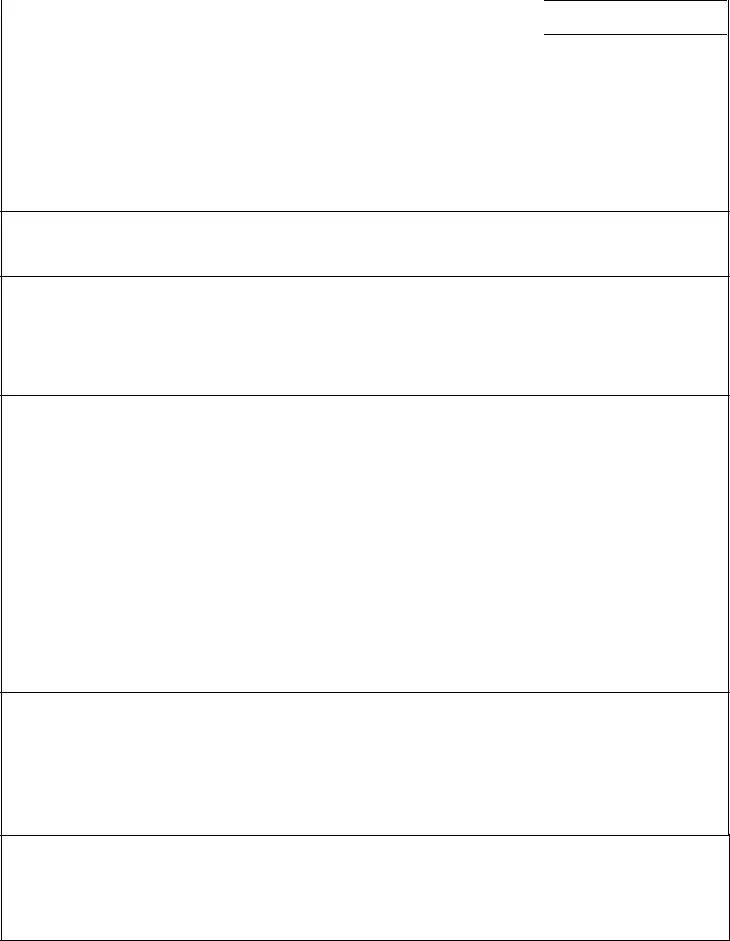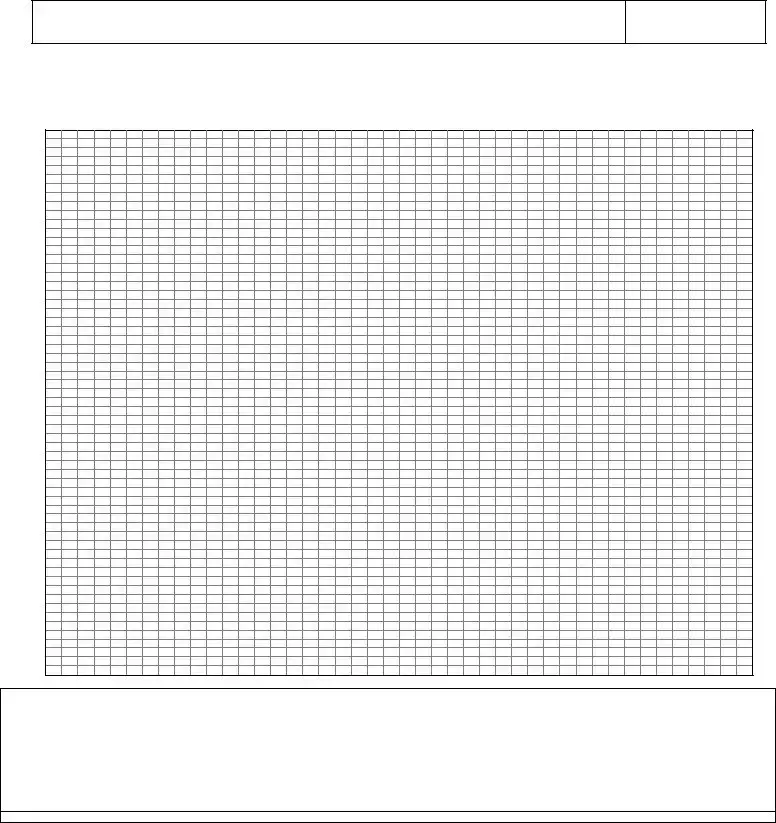
Arizona Department of Agriculture |
1A. VA/HUD/FHA CASE # |
DATE OF INSPECTION |
Pest Management Division |
1B. □ ORIGINAL REPORT |
1D. WDIIR # |
WOOD DESTROYING INSECT INSPECTION REPORT |
□SUPPLEMENTAL REPORT |
|
agriculture.az.gov |
1C. □SALE □REFINANCE |
1E. TARF # |
|
|
|
□OTHER |
|
NOTE: Pursuant to: A.R.S. § 3-3633 (A) This form must be completed only by a Certified Applicator. |
2.READ CAREFULLY PRIOR TO COMPLETING THIS PEST MANAGEMENT DIVISION (PMD) FORM
1.The VA or HUD/FHA case number shall be inserted in Item 1A by the lender or by the pest control company.
2.Areas that were inaccessible or obstructed (Item 7) may include, but are not limited to, wall coverings, fixed ceilings, floor coverings, furniture, or stored articles. In Item 7, the Inspector shall list those obstructions or areas which inhibited the inspection.
3.Item 8A alone is checked when evidence/insects are found but no control measures are performed. Items 8A and 8C are checked when evidence/insects are found AND control measures are performed.
4.When visible evidence is observed, wood‐destroying insects causing such evidence shall be listed in Item 8A and the visible damage resulting from such infestation shall be noted in Item 8D.
5.When treatment is indicated in Item 8C, the insects treated shall be named and the date of treatment indicated. The application method and chemicals used shall be entered in Item 10. Proper control measures may include issuance of a warranty. Warranty information shall also be entered in Item 10. (Proper control measures are those which are allowed by PMD Statute/Rule, or the label for the chemical used).
6.Visible evidence of conditions conducive to infestation from wood‐destroying insects shall be reported in Items 15‐18 on the second page of this form, (e.g., earth‐wood contact, faulty grade, insufficient ventilation, etc.).
7.All supplemental reports shall be completed within (30) days of the date of the original report.
3A. NAME OF INSPECTION COMPANY
3B. ADDRESS OF INSPECTION COMPANY (Street, City, ZIP)
5A. NAME OF PROPERTY OWNER/SELLER
5B. PROPERTY ADDRESS (Street, City, ZIP)
3C. TELEPHONE NUMBER (Include Area Code)
6B. LIST ALL UN-INSPECTED STRUCTURES
7.THIS INSPECTION DOES NOT INCLUDE THE FOLLOWING LISTED AREAS WHICH ARE OBSTRUCTED OR INACCESSIBLE. (See also Item 19, page 2.)
8.BASED ON THE INSPECTOR’S VISUAL INSPECTION OF THE READILY ACCESSIBLE AREAS OF THE PROPERTY (See Section (11) before completing):
□A. Visible evidence of wood-destroying insects was observed.
Describe evidence observed: __________________________________________________________________________________________________________
Type of Wood-Destroying Insects observed:______________________________________________________________________________________________
□B. No visible evidence of infestation from wood-destroying insects was observed.
□C. Visible evidence of infestation as noted in 8A. Proper control measures were performed on (date): __________________________________
□D. Visible damage due to _______________________ was observed in the following areas: ______________________________________
_____________________________________________________________________________________________________
□E. Visible evidence of previous treatment was observed. List evidence. (See also Item 20, page 2.): ____________________________________________________
9. DAMAGE OBSERVED, IF ANY |
10. ADDITIONAL COMMENTS (ALSO SEE PAGE 2.) |
□A. Will be or has been corrected by this company.
□B. Will not be corrected by this company.
□ C. It is recommended that noted damage be evaluated by a |
(Number of additional attachments to this report.) _________Page(s) |
licensed structural contractor for any necessary repairs to be made.
11.STATEMENT OF INSPECTOR
A. The inspection covered the readily accessible areas of the above listed structures, including attics and crawl spaces that permitted entry. B. Special attention was given to those areas which experience has shown to be particularly susceptible to attack by wood-destroying insects.
C. Non-destructive probing and/or sounding of those areas and other visible accessible wood members showing evidence of infestation was performed. D. The inspection did not include areas that were obstructed or inaccessible at the time of inspection.
E. Neither I, nor the company for which I am acting, have had, presently have, or contemplate having any interest in this property. I do further state that neither I, nor the company for which I am acting, is associated in any way with any party to this transaction.
12A. SIGNATURE OF INSPECTOR |
12B. INSPECTOR'S LICENSE NUMBER |
12C. DATE |
STATEMENT OF PURCHASER
I HAVE RECEIVED THE ORIGINAL, OR A LEGIBLE COPY, OF THIS FORM AND HAVE READ PAGE (1, 2, & 3) OF THIS FORM.
I UNDERSTAND THAT THIS IS NOT A STRUCTURAL DAMAGE, FUNGI/MOLD REPORT, OR A WARRANTY AS TO THE ABSENCE OF WOOD-DESTROYING INSECTS AND I CAN CONSIDER
ASSESSMENT BY A LICENSED STRUCTURAL CONTRACTOR OR FUNGI/MOLD INSPECTOR FOR ANY STRUCTURAL DAMAGE OR FUNGI/MOLD CONCERN.
13. SIGNATURE OF PURCHASER
3-7-18- AZDA- PMD-VC

PROPERTY NAME/ADDRESS |
|
|
|
|
|
|
|
|
DATE OF INSPECTION |
|
|
|
|
|
|
|
□ Furnished |
AT THE TIME OF THE INSPECTION THE PROPERTY WAS: |
□ Vacant |
□ Occupied |
□ Unfurnished |
|
|
CONDITIONS CONDUCIVE TO INFESTATION |
|
|
|
|
15. WOOD TO EARTH CONTACT (EC) |
|
□ YES |
□ NO |
(If YES, check mark and explain conditions conducive) |
|
□ Fence Abutting Structure |
□ Pier Posts |
|
|
|
|
|
|
□ Plants/Trees Contacting Structure |
|
|
|
|
□ Concrete Form Boards |
□ Porch Stairs |
□ Other_____________________________ |
|
|
|
|
□ Porch Post |
□ Trellis |
|
|
|
|
|
|
|
|
|
|
Comments: |
|
|
|
|
|
|
|
|
|
|
|
16. EXCESSIVE CELLULOSE DEBRIS (CD) |
□ YES |
□ NO |
(If YES, check mark and explain conditions conducive) |
|
Comments: |
|
|
|
|
|
|
|
|
|
|
|
17. FAULTY GRADES (FG) |
|
□YES |
□ NO |
(If YES, check mark and explain conditions conducive) |
|
□ Evidence of surface water draining toward house |
|
□ Stucco at or below grade |
|
|
|
|
□ Floor level or planters at or below grade |
|
□ Joists in crawl space less than 24" above grade |
|
|
|
|
□ Wood siding below grade |
|
|
□ Other________________ |
|
|
|
|
|
Comments: |
|
|
|
|
|
|
|
|
|
|
|
18. EXCESSIVE MOISTURE (EM) |
|
□ YES |
□ NO |
(If YES, check mark and explain conditions conducive) |
|
□ Standing Water |
□ Water Damage |
|
□ Bath/Shower/Toilet Leaking |
□ Inadequate Ventilation |
□ Sprinklers Hitting Structure |
□ Water Stain |
|
□ Plumbing Leaks |
|
□ Other_________________ |
□ Crawl Space/Water Leaking |
□ Improper Condensate Drainage |
□ Attic/Roof Leak |
|
|
|
|
Comments: |
|
|
|
|
|
|
|
|
|
|
|
|
|
|
|
|
|
|
|
|
19. INACCESSIBLE AREAS (IA) |
|
□ YES |
□ NO |
(If YES, check mark and explain) |
|
|
|
|
□ Attic – All |
|
□ Floors |
|
|
|
|
□ Sub/Crawl Space Area -- Clearance |
|
□ Attic – Joists |
|
□ Wall Interiors |
|
|
|
□ Sub Area/Crawl Space No Access |
|
□ Attic – Partial |
|
□ Enclosed Stairwell |
|
□ Areas Obstructed By Furniture Or Stored Articles |
□ Plumbing Traps |
|
□ Dropped Ceilings |
|
|
|
|
|
|
□ Other____________________________________________________________________________________________________________________
Comments:
20.EVIDENCE OF PREVIOUS TREATMENT
□BY ANOTHER COMPANY: While evidence of previous treatment does exist, it is impossible for the inspecting company to
ascertain if such treatment was properly performed. Further investigation is left to the Buyer's discretion to determine if such treatment was done properly and if a valid warranty exists against the target pest of such treatment.
□BY THE INSPECTING COMPANY: Previous treatment is recorded for this property. At the Buyer's discretion, treatment records can be viewed at the inspecting company's local office with the property owner's permission.
Account Number: __________________________ Date of Initial Treatment: __________________ Target Pest: ______________________________
Warranty Expiration Date: _______________ Other:_______________________________________________________________________________________
Pest Control Inspector’s Additional Comments
3-7-18- AZDA- PMD-VC
GRAPH OF STRUCTURE(S)
(Note: Graph Not To Scale)
PURSUANT TO: A.A.C. R3-8-501 (E)(5)(o) THE INSPECTOR MUST COMPLETE THE GRAPH ON PAGE (3) AND CHECK (√) MARKED BELOW FOR ANY
ITEMS WHICH ARE NOTED ON PAGES (1) AND (2)
√ |
CODE |
SEE GRAPH PAGE (3) |
√ |
CODE |
SEE GRAPH PAGE (3) |
√ |
CODE |
SEE GRAPH PAGE (3) |
√ |
CODE |
SEE GRAPH PAGE (3) |
|
SU Subterranean Termites |
|
OW Other Wood Destroying Insects (*) |
|
OB Obstructions |
|
WD Water Damage |
|
DR Drywood Termites |
|
FG Faulty Grade |
|
IA Inaccessible Areas |
|
WS Water Stains |
|
DA Dampwood Termites |
|
EC Wood To Earth Contact |
|
IV Inadequate Ventilation |
|
RL Roof Leaks |
|
BE Wood Destroying Beetles |
|
CD Cellulose Debris |
|
PL Plumbing Leaks |
|
EM Excessive Moisture |
|
CA Carpenter Ants |
|
PA Plantings Abutting Structure |
|
SP Sprinkler Hitting Structure |
|
FI Further Inspection Needed |
(*) |
Other Wood Destroying Insects (list) |
|
|
|
|
|
|
|
|
3-7-18- AZDA- PMD-VC


